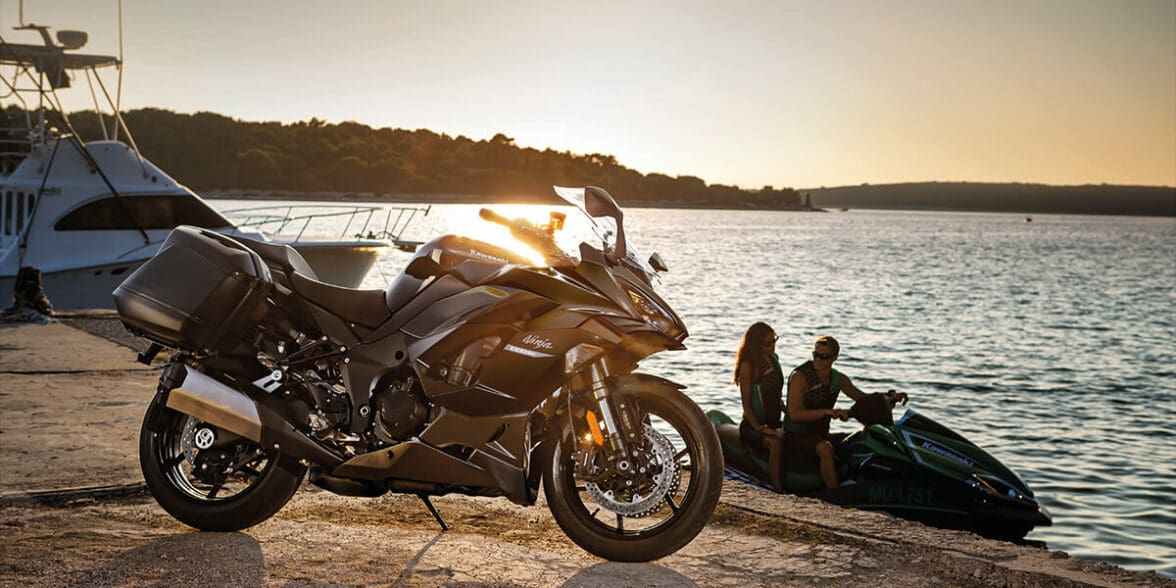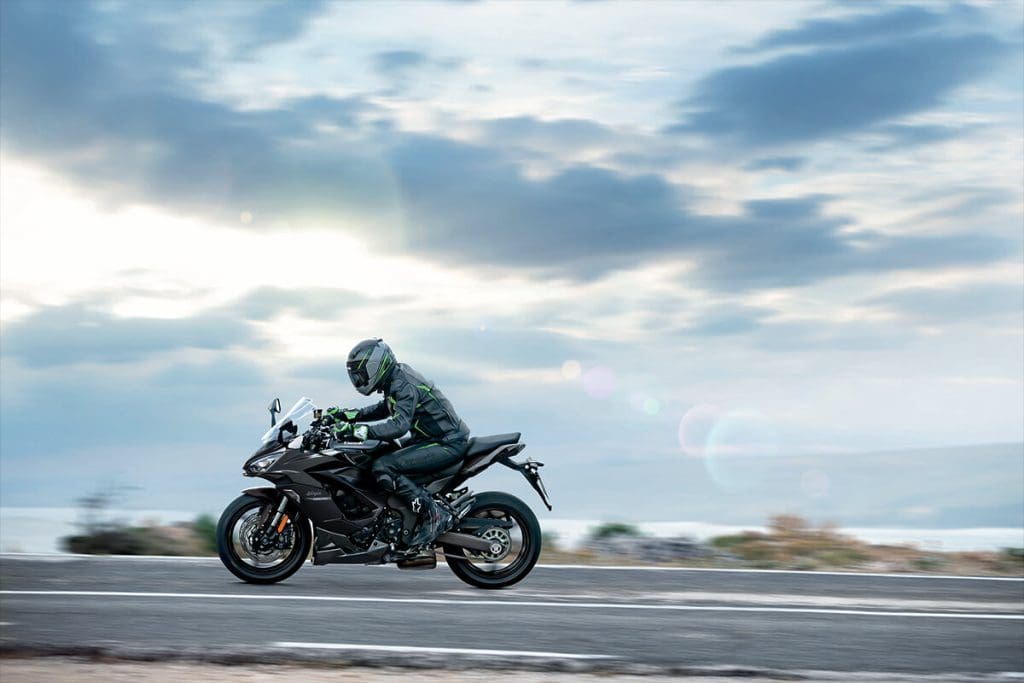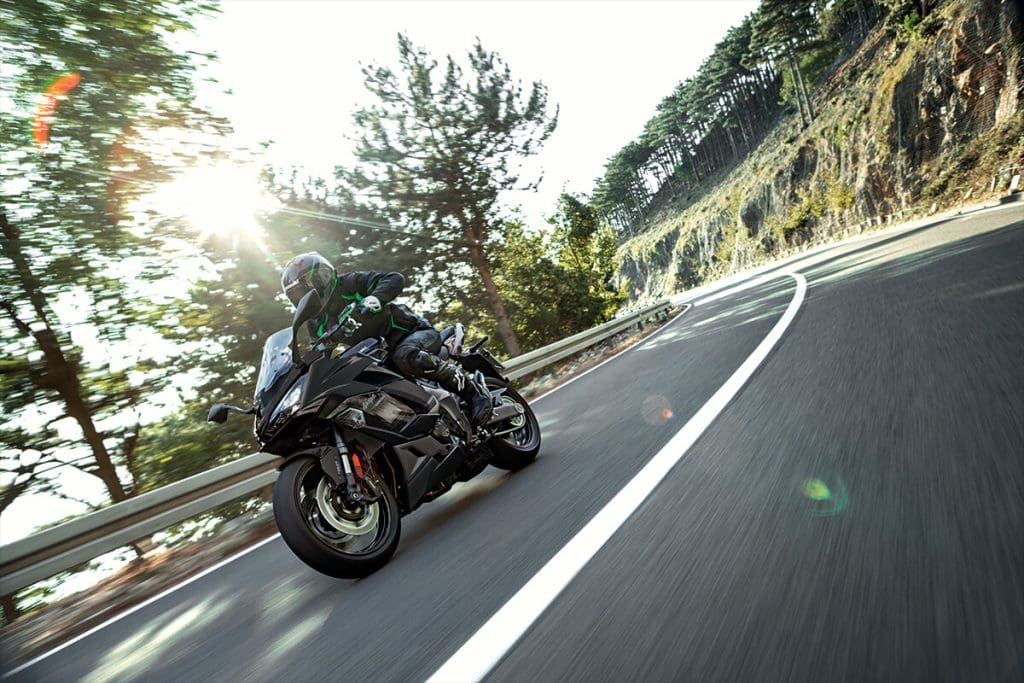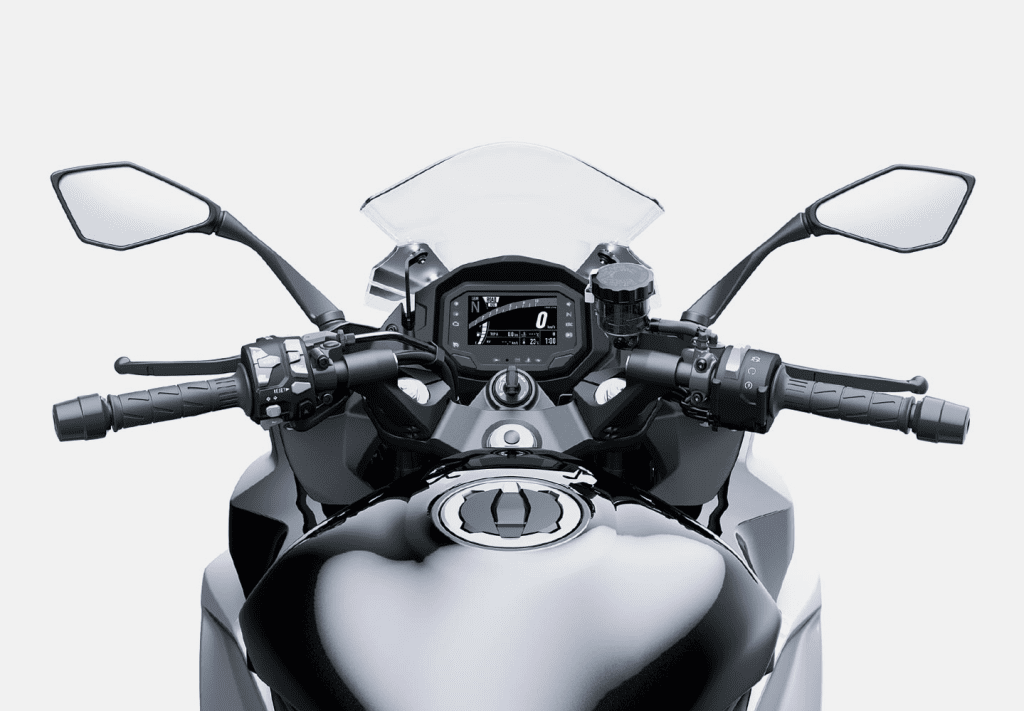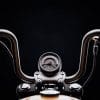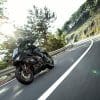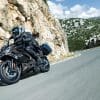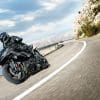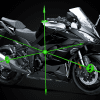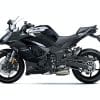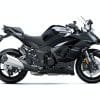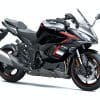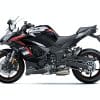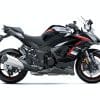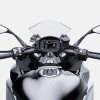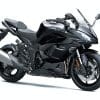The 2021 Kawasaki Ninja 1000SX: Team Greens Tanto Sword
Contents
The 2021 Kawasaki Ninja 1000SX remains at the top of the Ninja Sport series from Team Green, carrying forward for 2021 largely unchanged. After getting suspension revisions between the 2019 and 2020 model years, this Japanese-made Sport Touring machine is a wonderful ride.
The 1,043cc 16-valve in-line four is silky smooth with a melodious exhaust note from all 138 horsepower. Similar to the other top offerings of the 2021 Kawasaki lineup, the Ninja 1000 has an advanced IMU providing all the latest electronic riding wizardry. Owners will now enjoy the latest in Kawasaki Cornering Management, Traction Control, Selectable Rider modes, Up and Down Quick Shifting, and Improved ABS. Connect the Kawasaki Rideology app to your smartphone and new ride tracking features open up, also connecting phone functions to the color TFT display.
Colors for 2021 include — Metallic Carbon Gray / Metallic Diablo Black, Metallic Moondust Gray / Metallic Diablo Black.
The 2021 Kawasaki Ninja 1000SX starts at $12,599 USD / $14,999 CAD.
On this page: we’ve curated specs, features, news, photos/videos, etc. so you can read up on the new 2021 Kawasaki Ninja 1000SX in one place.
Model Overview
General Info
- Price: $12,599 USD / $14,999 CAD
- Key Features:
-
- ABS Brakes
- Smartphone Connectivity
- Assist And Slipper Clutch
- Twin LED headlights
Main Specs
- Engine: 4-stroke, In-Line Four, DOHC, 16-valve, liquid-cooled
- Power: 104.5kW (142hp)@10,000 RPM
- Torque: 81.9 lb-ft (111 NM) @ 8,000 RPM
- Wet Weight: 233 kg (514 lb)
- Seat Height: 820 mm (32.3 in)
Competitors
- BMW R 1250 RS
- Suzuki Katana
- Yamaha Tracer 9 GT
2021 Kawasaki Ninja 1000SX Specifications
ENGINE |
||
| Engine | 1,043cc, 4-stroke, In-Line Four, DOHC, 16-valve, liquid-cooled | |
| Power | 104.5kW (142hp)@10,000 RPM | |
| Bore x Stroke | 77.0 x 56.0mm | |
| Compression Ratio |
11.8:1
|
|
| Fuel System | DFI® w/38mm Keihin throttle bodies (4) and oval sub-throttles | |
| Starter | Electric | |
| Lubrication | ||
DRIVETRAIN |
||
| Clutch | ||
| Transmission | 6-speed, return shift | |
| Final Drive | Sealed chain | |
CHASSIS |
||
| Suspension Front | 41mm inverted cartridge fork with stepless compression and rebound damping, adjustable spring preload/4.7 in | |
| Suspension Rear | Horizontal back-link with stepless rebound damping, remotely adjustable spring preload/5.7 in | |
| Brakes Front | Dual 300mm petal-type rotors with radial-mount 4-piston monobloc calipers and ABS | |
| Brakes Rear |
Single 250mm petal-type rotor with single-piston caliper and ABS
|
|
| Tires Front | 120/70 ZR17 | |
| Tires Rear | 190/50 ZR17 | |
| Fuel Tank Capacity | 5.0 gal | |
| Color |
Metallic Carbon Gray/Metallic Diablo Black
|
|
ELECTRICAL |
||
| Ignition | TCBI with digital advance | |
| Spark Plugs | ||
| Headlight | LED | |
| Tail Light | LED | |
DIMENSIONS |
||
| Overall Length | 82.7 in | |
| Overall Width | 32.5 in | |
| Overall Height | 46.9 / 48.2 in | |
| Wheelbase | 56.7 in | |
| Ground Clearance | 5.3 in | |
| Seat Height | 32.3 in | |
| Curb Weight | 513.8 lb | |
WARRANTY |
||
| Warranty | 12 months | |
| Kawasaki Protection Plus | 12 / 24 / 36 / 48 months | |
2021 Kawasaki Ninja 1000SX Features
Assist & Slipper Clutch
Under normal operation, the assist cam functions as a self-servo mechanism, pulling the clutch hub and operating plate together to compress the clutch plates. This allows the total clutch spring load to be reduced, resulting in a lighter clutch lever feel when operating the clutch.
When excessive engine braking occurs – as a result of quick downshifts (or an accidental downshift) – the slipper cam comes into play, forcing the clutch hub and operating plate apart. This relieves pressure on the clutch plates to reduce back-torque and helps prevent the rear tire from hopping and skidding. This race-style function is particularly useful when sport or track riding.
Economical Riding Indicator
While effective vehicle speed and engine speed may vary by model, paying attention to conditions that cause the “ECO” mark to appear can help riders improve their fuel efficiency – a handy way to increase cruising range. Further, keeping fuel consumption low also helps minimize negative impact on the environment.
Electronic Cruise Control
Electronic Throttle Valves
Electronic throttle valves also enable more precise control of electronic engine management systems like S-KTRC and KTRC, and allow the implementation of electronic systems like KLCM, Kawasaki Engine Brake Control, and Electronic Cruise Control.
KCMF (Kawasaki Cornering Management Function)
• S-KTRC/KTRC (including traction management and wheel lift management)
• KLCM (including traction management and wheel lift management)
– Designed to optimize acceleration from a stop
• KIBS (including pitching management and corner braking management)
• Kawasaki Engine Brake Control
POWER MODES
Smartphone Connectivity
2021 Kawasaki Ninja 1000SX Photos
2021 Kawasaki Ninja 1000SX Videos
Links
Kawasaki Official Websites


